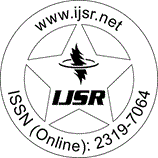Downloads: 104
India | Computer Science Engineering | Volume 9 Issue 8, August 2020 | Pages: 571 - 574
Second-Generation Digital Mobile Telephone Standard using a Variation of Time Division Multiple Access (TDMA)
Abstract: Traditional mobile service was structured similar to television broadcasting: One very powerful transmitter located at the highest spot in an area would broadcast in a radius of up to fifty kilometers. The Cellular concept structured the mobile telephone network in a different way. Instead of using one powerful transmitter many low-powered transmitter were placed throughout a coverage area. For example, by dividing metropolitan region into one hundred different areas (cells) with low power transmitters using twelve conversations (channels) each, the system capacity could theoretically be increased from twelve conversations using one hundred low power transmitters.
Keywords: Time Division Multiple Access, TDMA, Telephone Standard
How to Cite?: Manjushree T L, "Second-Generation Digital Mobile Telephone Standard using a Variation of Time Division Multiple Access (TDMA)", Volume 9 Issue 8, August 2020, International Journal of Science and Research (IJSR), Pages: 571-574, https://www.ijsr.net/getabstract.php?paperid=SR20804140809, DOI: https://dx.doi.org/10.21275/SR20804140809
